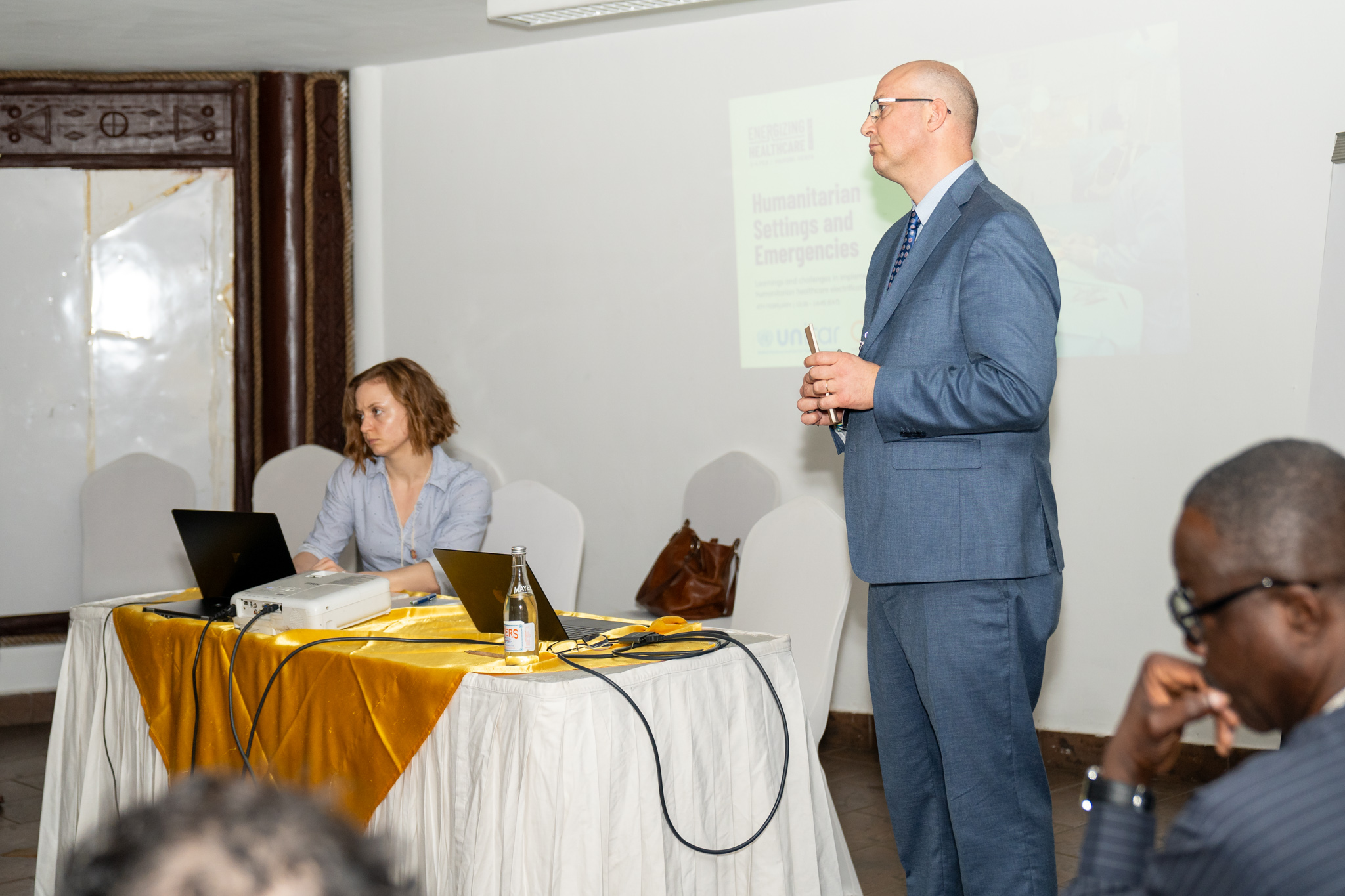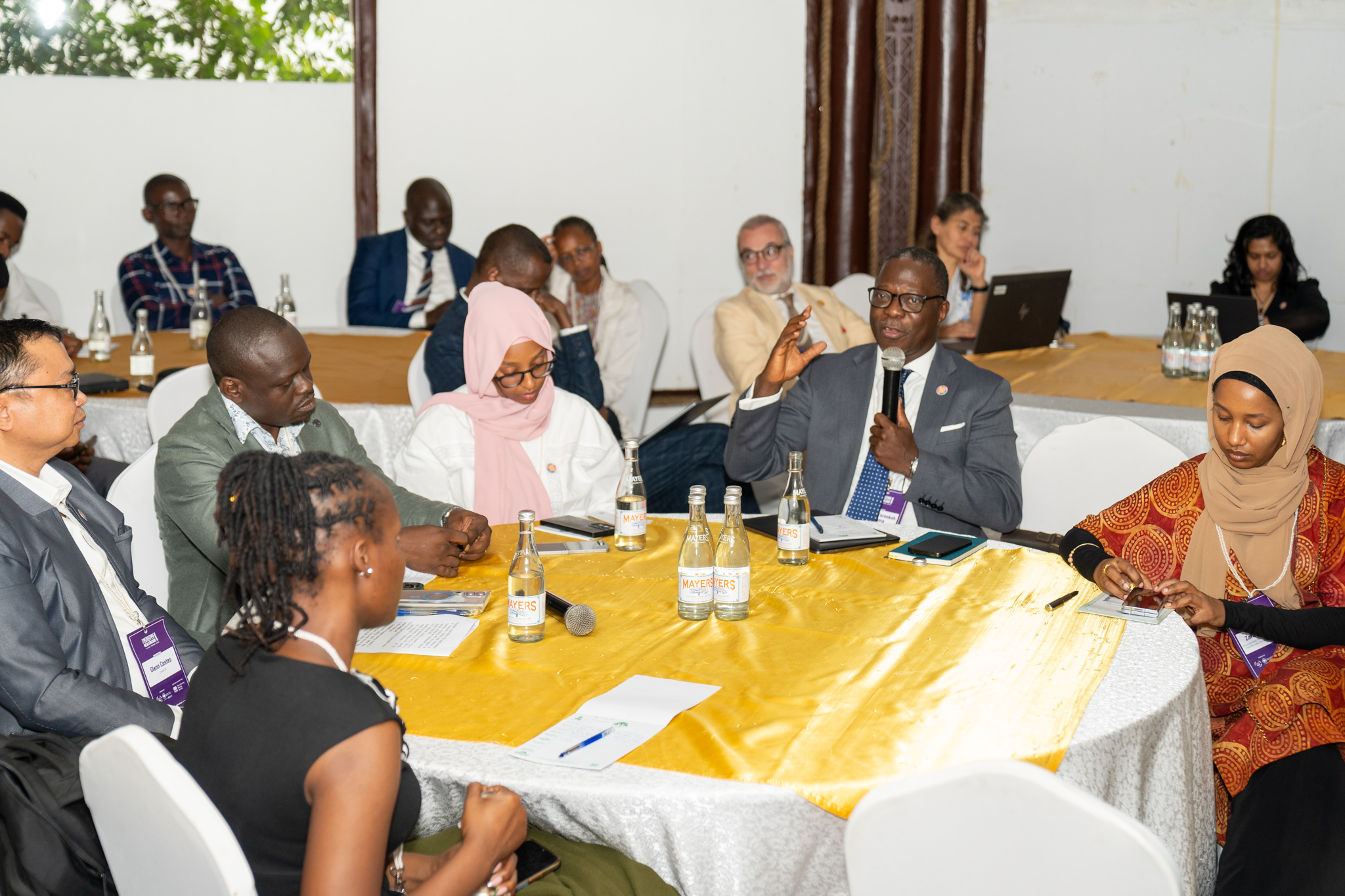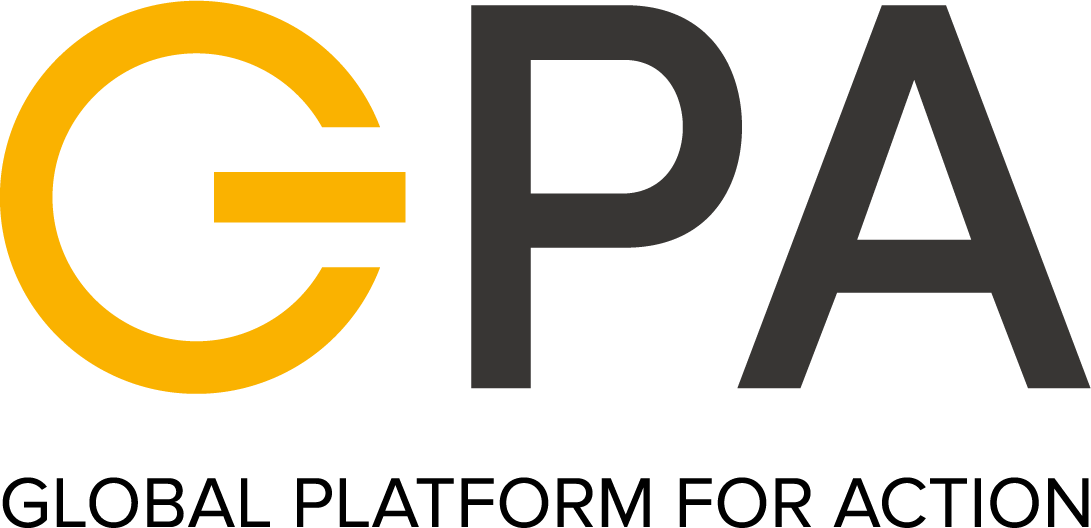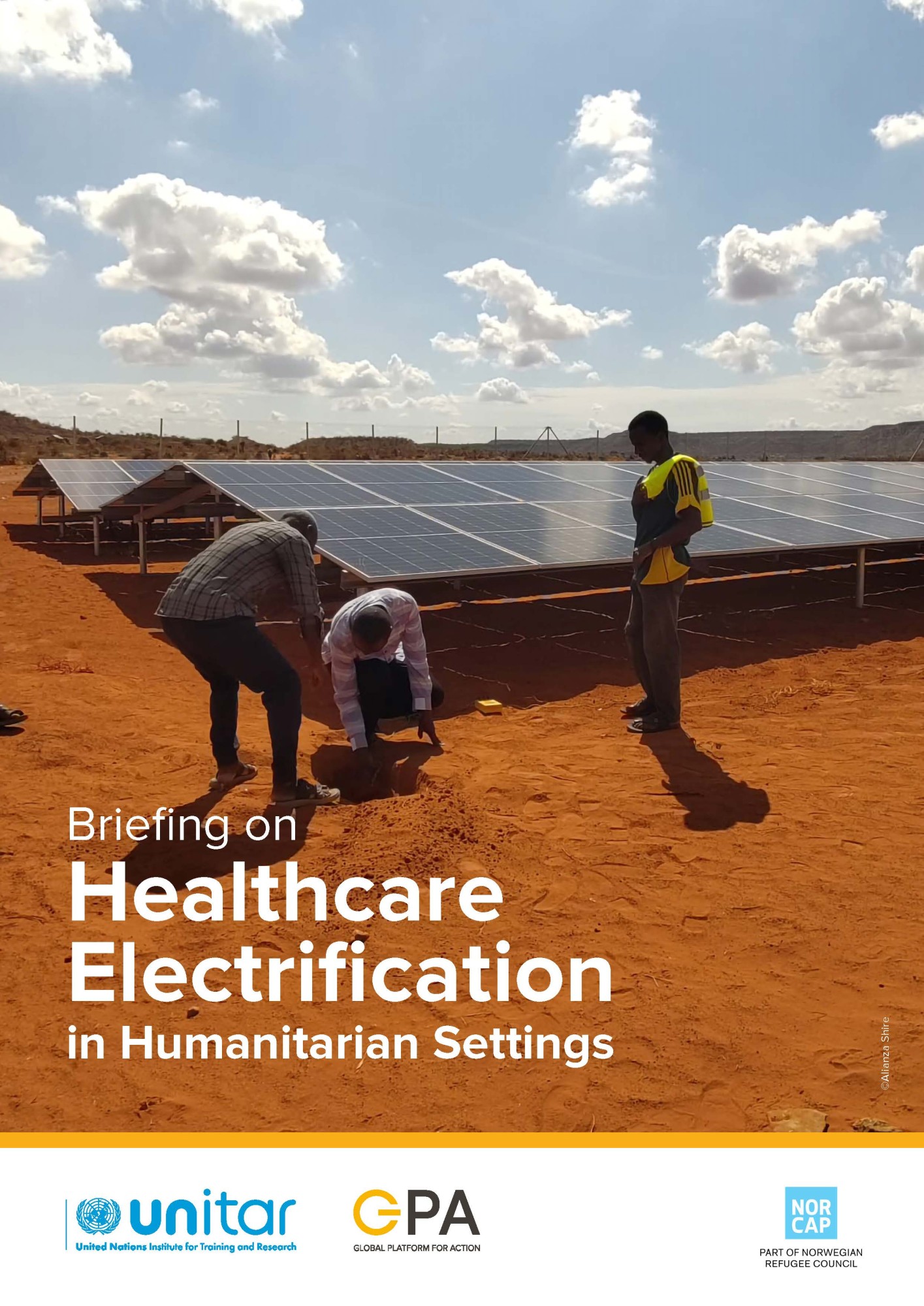In this section
In this sectionThe Coordination Unit of the Global Platform for Action on Sustainable Energy in Displacement Settings (GPA) in collaboration with NORCAP launched its new “Briefing on Healthcare Electrification in Humanitarian Settings” at the Energizing Healthcare Conference 2025 hosted by Sustainable Energy for All (SEforALL) and the WHO-led Health and Energy Platform of Action (HEPA) in Nairobi, Kenya on 3-4 February.
Learnings from the report were shared in a lively session titled “Humanitarian Energy and Emergencies” hosted by Shahaab Javeri, Healthcare Electrification Consultant at the GPA and moderated by Salvatore Vinci, Technical Lead for Healthcare Facilities Electrification at the World Health Organization (WHO).
In a case study presentation, Jupsergi Prodige Dimi Ngolo, NORCAP Energy Expert on assignment to UNHCR Tanzania, detailed UNHCR’s efforts to develop a sustainable plan for long-term operation and maintenance (O&M) of solar electricity solutions in Nyarugusu and Nduta refugee camps by providing comprehensive training to 40 community technicians over a five-year period, including trialling the use of AI for troubleshooting.

Thomas Duveau, Chief Strategy Officer at the Access to Energy Institute (A2EI), highlighted the organisation’s work using data, monitoring, reporting, and verification (dMRV) tools. A2EI aims to use dMRV to support adequate electricity system design and demonstrate the emissions avoidance potential of solarising humanitarian healthcare facilities in order to unlock climate finance. Michel Muvule, Programme Director for Biogas Solutions Uganda Limited, spoke about his company’s success developing integrated biogasification solutions that provide energy for healthcare; waste management, sanitation, and hygiene services; and local jobs in displacement settings.
Glenn Costes, Regional Technical Coordinator the UNHRC Regional Bureau for East, Horn of Africa, and the Great Lakes opened the panel discussion by highlighting the sizeable funding gap for healthcare solarisation. Emmanuel Biririza, NORCAP Regional Energy Advisor for East, South and the Horn of Africa, built on this point, suggesting that the lack of funding partly stems from the fragmentation of the sector and uncertainty among different stakeholders on how to access what is available.
Mr Biririza also called for greater inclusion of communities in the project process. Jawahir Mohamed, Operations Manager at Somali engineering company Tamarso, echoed this point. She spoke about Tamarso’s approach to designing systems in close collaboration with healthcare facility staff as well as the company’s choice to offer a standard five-year O&M period during which they prepare the community to take ownership of the system.
Maurice Ferenkeh Koroma, Special Advisor to the Ministry of Health for Sierra Leone contributed to the discussion by reiterating that displacement is often a protracted situation, as was the case historically with Liberian refugees who came to Sierra Leone. Many of these refugees ultimately integrated into Sierra Leonean society. Thus, it is important to ensure that people have access to quality healthcare and the opportunities needed to live a dignified life in displacement over the long-term.
Overall, the presentations and panel discussion highlighted the importance of:
- Community inclusion and ownership in project development and execution
- Developing sustainable management approaches and funding sources to ensure long-term O&M of systems
- Utilising dMRV tools to both improve the accuracy of system design and monetise the environmental and social benefits of health facility solarisation

About the new report
Prepared by the GPA Coordination Unit with support from NORCAP, the research finds that many humanitarian healthcare facilities (HHF) lack reliable, clean electricity access. Despite their importance in meeting the healthcare needs of both displaced and host communities, to date HHF have been under-prioritised in both national energy and healthcare planning and large-scale international healthcare electrification initiatives.
Featuring 11 country case studies on healthcare electrification, the briefing illustrates the current approaches to electrification of HHF employed by humanitarian organisations and how this differs from those piloted by stakeholders tackling this challenge in development contexts. The report concludes with a series of recommendations on how to form effective partnerships to enable sustainable electrification of humanitarian healthcare facilities, priorities for cooperation, and a call to action for individual stakeholders. To read the full report, click here.
In the research process for this report, the GPA Coordination Unit has also developed a pipeline of 175 HHF across 81 sites spanning 12 countries in sub-Saharan Africa. If you are a partner interested in providing funding or technical assistance to support the solarisation of these facilities, reach out to us at energy@unitar.org.
Last updated: 21/02/2025

